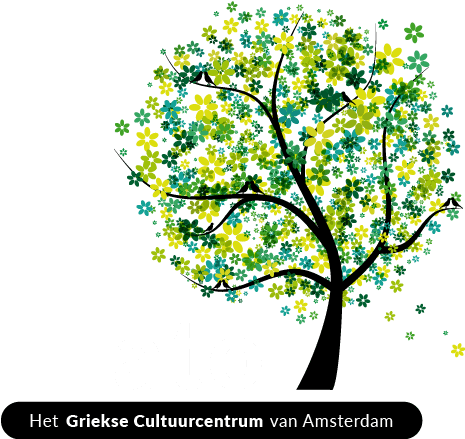No products in the basket.
The magical character of the Summer Solstice.
Saying goodbuy to June!
What is the Summer Solstice?
Every year on the 20th of June (or 21st) the sun is at the highest point of the sky at the northern hemisphere. That is why on that day the longest day of the year (=summer solstice) is observed – at least for the northern hemisphere-, and vice versa, the shortest day for the southern hemisphere. This is the official start of the summer for the Northern Hemisphere and the winter for the Southern Hemisphere. In many cultures, the summer solstice or ‘midsummer’ was often celebrated.
Ceremonies and beliefs related to the summer solstice

In ancient civilizations a festival (more than one day celebrations) was organized to honour the Sun. The Sun, according the Greek mythology, was a god, but he did not have a place among the Olympian gods.
The night of June 21st is called the night of the “Heliotrope” or Sun and since prehistoric times people lit fires in order to purify and prevent any bad development of life. This way man welcomed the summer.
As characteristically is mentioned at the article of National Geographic: “The Egyptians built the pyramids of Giza so that the sun, seen from the Sphinx, sets during the summer solstice exactly between the two pyramids.
Incas celebrated the winter solstice with a ceremony called Inti Raymi.
Archaeologists also discovered in a long overgrown Maya city in Guatemala the remains of an astronomical observatory, with buildings that were built in line with the sun during the solstices”. (Read here the whole article of National Geographic).
In Ancient Greece people used to lit “fires of fortune”, and young men gave erotic vows, jumping three times over the fires in order to seal their vows.
The Ancient Celts in Britain had the tradition of lighting “Coast fires” and celebrated in Stonehenge.
The name Stonehenge originates from the ancient English words Stanhen and gist, meaning “hanging stones”. Although there are countless theories, the only sure is that the monument remained a worship-place for about 1500 years and the stones came from the region of Wales. On the day of summer solstice and during its rising, the sun appears at the same line with the main stone of the monument.
In ancient Rome, “Vestalia” were celebrated and celebrations lasted one week. It was a fire festival, in honour of the deity Vesta, who was the protector of the family.
And because all these pagan beliefs have their own rules and the ability to “travel in time”, we will see that up till now many tourists use to visit Stonehenge on “midsummer day” (or Summer Solstice / 21 June).
Greece today

The magical “fires of Klidonas” or “fires of the Heliotrope”: the custom
In Greece, the ritual seems to have been transferred to two days later with the fires that are lit on the day of St. John Klidonas, as they characteristically are called (in other areas the name is St John Heliotropos).
The fires are usually lit at crossroads, in neighbourhoods and each neighbourhood has as a goal to light the biggest fire. In these fires they use to throw all the waste objects of the house and first of all the flower-wreath of the 1st of May. This symbolizes the need for renewal and regeneration.
Young people jump over the fires, making wishes they hope that will be realized.
At the same time, unmarried girls try through magic and secret signs to have their “riziko” (= luck/ fate) revealed. That is why Ai Giannis (=St John) of the summer is also called Rizikaris or Klidonas (= omen, sign). The essentials are a pitcher full with “silent” water and a personal object of the girl.
The girls of the village gather in a house. One of them goes to the fountain of the village and fills a jar with water. Then she returns to the house, remaining silent all the way. That is why it is called “unspeakable” or “silent water”. Each girl throws in it a “rizikari” (i.e. a lucky charm that may be a piece of fruit, some jewellery, etc). After that the pitcher is covered with a red cloth and it is “locked”, which means that it is tied with a string, and left in an open space for the whole night in the starlight.
During this evening girls are said to dream the face of the man they will marry.
Next morning, the girl who brought the water must take it inside, before the first light of the sun. In the afternoon, all the girls are gathered again. The pitcher is opened and each one of the girls picks a charm and shows it around. In the group there is also an older woman who has talent in making small poems spontaneously, a sort of “mantinades” as they would call it in Crete. A small poem is made every time a charm is chosen. These improvised poems are believed to foretell the future of the uknown girl who happens to own the “rizikari“.
The magical “fires of Klidonas” or “fires of the Heliotrope”: the symbolism
From the beginning, these “midsummer” fires had a purifying character. That’s why all the waste of a house are thrown into them.
Those who jump over the fires, keeping their wishes secret, the hidden thoughts of the girls, their dreams, and the improvised poems also confess their occult character.
Besides all the aforementioned, the fires are initiation fires. The “silent water” and its magic properties combined with the power of fire to make the wishes come true, are elements of initiatory character.
Although the official religion has condemned the ceremonies and fires of Klidonas you will find them in many areas, such as on Crete and elsewhere. It’s not necessary to believe; you can just allow yourself to live the moment.
And as you jump over the fire, remember to make a wish. Maybe it will not come true. But you never know: maybe St John of the “midsummer” brings you luck .
© Lato,
Het Griekse Taal– & CultuurCentrum van Amsterdam




